Machupicchu
Machu Picchu is considered a UNESCO World Heritage Site and was named one of the New Seven Wonders of the World in 2007. Its cultural and historical significance, coupled with its breathtaking location, attracts millions of visitors from around the globe each year
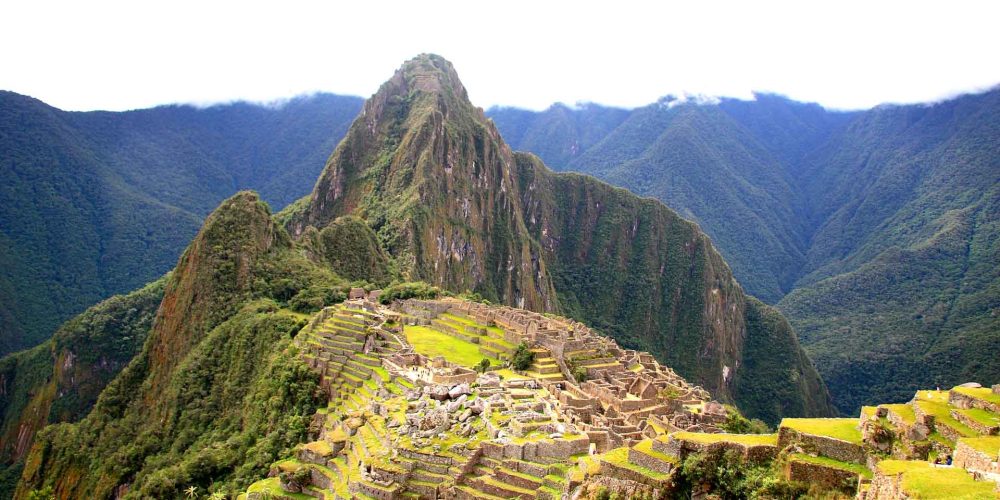
Table of Contents
Overview
This Inka sanctuary built in the 14th century was named by UNESCO as one of the wonders of the modern world. Its architectural beauty and its geographical setting make it a magical and unique place in the world that makes the hearts of those who visit it vibrate. Whether one visits the sacred enclosures made of granite or observes its well distributed agricultural terrace system, this marvel never disappoints the visitor.
At the fall of the Inca empire; after more than 400 years; Machupicchu continues to be an enigma for many scholars, but the fineness of its construction and its amazing architecture allows us to understand the advanced techniques that the Inkas used in its construction.
Machupicchu is also part of the famous Inca Trail, one of the most popular treks in Peru.
History
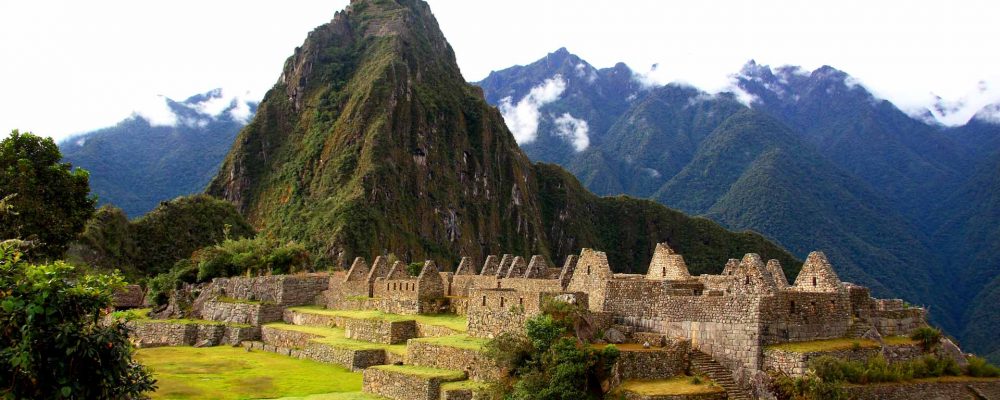
Machu Picchu, often hailed as the “Lost City of the Incas,” is a remarkable archaeological site nestled high in the Andes Mountains of Peru. Believed to have been built by the Inca emperor Pachacuti in the 15th century, Machu Picchu served as a sacred retreat and administrative center. Its exact purpose remains a subject of scholarly debate, but many historians suggest that it played a significant role in the religious and ceremonial activities of the Inca civilization. Constructed with precision-cut stones that fit seamlessly together without the use of mortar, the site showcases the advanced engineering and architectural prowess of the Inca people. Despite its grandeur, Machu Picchu was abandoned and largely forgotten after the Spanish conquest of the Inca Empire in the 16th century. It wasn’t until 1911 that the American historian and explorer Hiram Bingham rediscovered the site, bringing international attention to this awe-inspiring testament to ancient Inca civilization. Today, Machu Picchu stands as a UNESCO World Heritage Site and attracts millions of visitors each year, offering a glimpse into the rich history and ingenuity of the Inca people.
Things to do
Visiting Machu Picchu offers a plethora of activities that allow you to immerse yourself in the rich history, breathtaking scenery, and unique culture of this iconic site. Here are some recommended things to do in Machu Picchu:
Guided Tour: Engage in a guided tour to gain insights into the historical and cultural significance of the various structures within Machu Picchu. Knowledgeable guides can provide context to the architecture and the mysteries surrounding the site.
Hike Huayna Picchu or Machu Picchu Mountain: For panoramic views of Machu Picchu and the surrounding landscape, consider hiking either Huayna Picchu or Machu Picchu Mountain. These hikes offer different perspectives of the site and are physically rewarding.
Sun Gate (Inti Punku): Embark on a trek to the Sun Gate, the original entrance to Machu Picchu for the Inca Trail travelers. This vantage point provides a stunning view of the ruins and the surrounding mountains.
Explore the Agricultural Sector: Discover the agricultural terraces and learn about the sophisticated farming techniques employed by the Inca to cultivate crops on the steep slopes of the Andes.
Temple of the Sun: Admire the precision of Inca stonework at the Temple of the Sun, where the architecture aligns with the sun’s movements during the solstices.
The Main Plaza: Spend time in the heart of Machu Picchu at the Main Plaza, surrounded by significant structures like the Temple of the Three Windows and the Principal Temple.
Inca Bridge: Take a short hike to the Inca Bridge, a secret entrance and a military lookout. The trail offers scenic views and a glimpse into the strategic considerations of the site’s design.
Museum and Craft Markets: Visit the on-site museum to further understand Machu Picchu’s history and view artifacts found during its excavation. Additionally, explore the craft markets in Aguas Calientes for souvenirs.
Photography: Capture the beauty of Machu Picchu from various angles, especially during sunrise or sunset when the soft light enhances the mystique of the ruins.
Enjoy the Serenity: Take some time to simply sit and soak in the atmosphere, appreciating the beauty and tranquility of this ancient wonder.
Remember to respect the site’s rules and regulations, as Machu Picchu is a UNESCO World Heritage Site, and preserving its integrity is crucial for future generations
How to get to Machupicchu
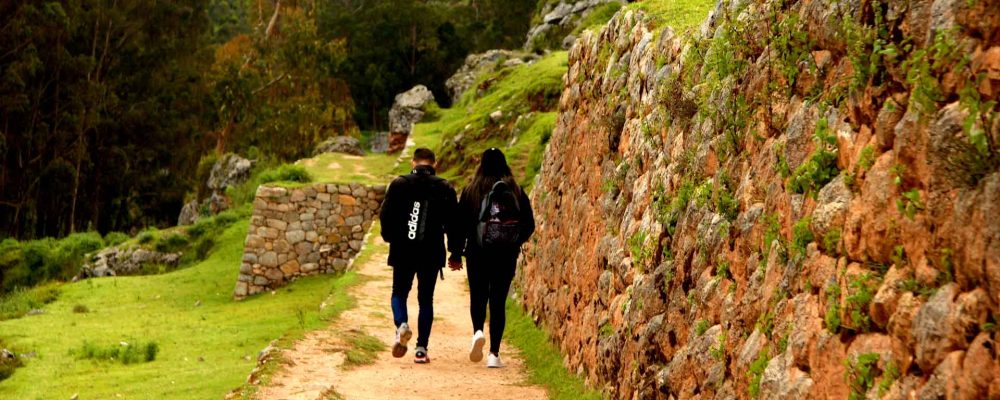
Getting to Machu Picchu involves a combination of transportation modes, and the journey is as exciting as reaching the destination itself. Machu Picchu, located in the Andes Mountains of Peru, is one of the most iconic archaeological sites in the world. Here’s a guide on how to get there:
- Fly to Cusco:
Start your journey by flying into Alejandro Velasco Astete International Airport in Cusco, Peru. This airport is the main gateway to Machu Picchu.
Many international flights connect through Lima, the capital of Peru. From Lima, you can take a domestic flight to Cusco.
- Take the Train:
Once in Cusco, the next step is to get to Aguas Calientes, the town located at the base of Machu Picchu. The most common way is by train.
There are several train options, including the Expedition, Vistadome, and Hiram Bingham trains. The journey is scenic, offering breathtaking views of the Andes.
- Inca Rail or PeruRail:
Both Inca Rail and PeruRail are the main companies operating train services to Aguas Calientes. It’s advisable to book tickets in advance, especially during the high season, as trains can fill up quickly.
- Combine Train and Hike:
For those seeking a more adventurous route, you can take a train to a certain point and then embark on a trek. The most famous trek is the Inca Trail, which takes about 4 days and leads you to Machu Picchu through stunning landscapes.
- Bus from Aguas Calientes:
Upon reaching Aguas Calientes, the final leg of the journey involves a bus ride to the entrance of Machu Picchu. Buses run frequently and take approximately 30 minutes to reach the site.
- Hiking to Machu Picchu:
Alternatively, if you are up for a physical challenge, you can hike up to Machu Picchu from Aguas Calientes. The hike, known as the “Hidroeléctrica Route” or “The Inca Jungle Trail,” offers a different perspective of the surrounding landscapes.
- Entrance Tickets:
Make sure to purchase your entrance tickets to Machu Picchu in advance, as there are daily visitor limits. You can buy tickets online or in person in Cusco or Aguas Calientes.
- Guided Tours:
While exploring Machu Picchu, consider hiring a guide to enhance your experience. Guides provide valuable insights into the history and significance of the site.
- Weather Considerations:
Machu Picchu’s weather can be unpredictable, so pack accordingly. Layers, a rain jacket, and sturdy walking shoes are recommended.
- Enjoy Your Visit:
Finally, take your time exploring Machu Picchu. Whether you choose to hike the surrounding mountains or simply wander through the ancient ruins, savor the unique atmosphere of this UNESCO World Heritage site.
By combining air travel, train rides, and possibly a trek, the journey to Machu Picchu becomes an integral part of the overall experience, showcasing the natural beauty of the Peruvian landscape.
Travel guidelines
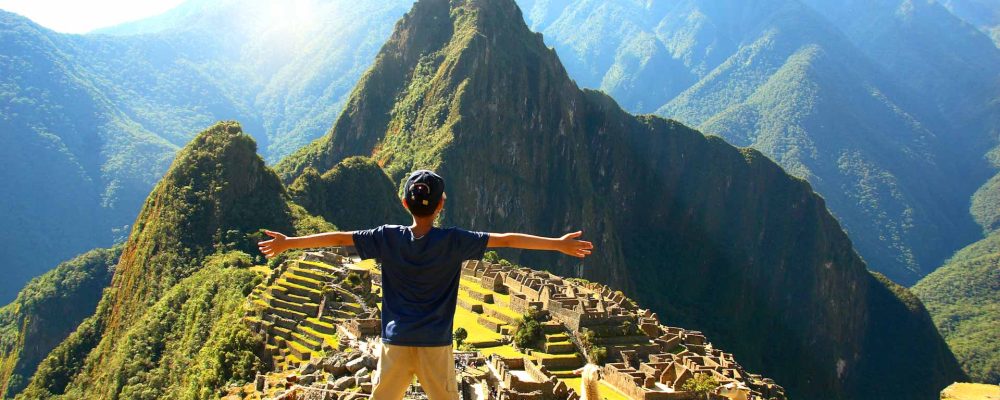
As of my last knowledge update in January 2022, Machu Picchu, located in Peru, is one of the most iconic and popular tourist destinations in the world. The guidelines for visitors are crucial to preserving the site’s cultural and historical significance, as well as ensuring the safety and enjoyment of all who visit. Keep in mind that guidelines may have evolved or changed since my last update, so it’s essential to check for the latest information from reliable sources.
Here are general guidelines that were typically in place:
Ticket Purchase and Entry:
Visitors are required to purchase tickets in advance, and there may be restrictions on the number of daily visitors to control the site’s impact.
Tickets are often sold for specific time slots to manage the flow of visitors throughout the day.
Guided Tours:
Many visitors are encouraged to explore Machu Picchu with a certified guide. This helps in understanding the historical and cultural significance of the site while ensuring that visitors follow designated paths.
Designated Paths and Areas:
Visitors are usually required to stay on designated paths and are not allowed to wander off into restricted areas to protect the site’s structures and environment.
Climbing and Touching:
Climbing on the ruins or touching the stones is typically prohibited to prevent damage to the delicate structures. Preservation efforts are a priority.
Bags and Backpacks:
Large bags and backpacks might be restricted from certain areas to prevent accidental damage to the site. In some cases, there may be storage facilities provided.
No Food or Drinks:
Consumption of food and drinks, other than water, is often prohibited within the archaeological site to prevent littering and damage to the environment.
Respect for Wildlife and Flora:
Visitors are usually reminded to respect the local flora and fauna. This includes refraining from disturbing wildlife and not picking plants.
Waste Disposal:
Strict waste disposal guidelines are in place. Visitors are generally required to carry out all their trash to maintain the site’s cleanliness.
Photography:
While photography is generally allowed, the use of tripods and professional equipment may require special permits. Flash photography might be restricted in certain areas to preserve delicate artifacts.
Respect for Local Culture:
Visitors are encouraged to respect the local culture and traditions. This includes being mindful of the local communities surrounding Machu Picchu.
It’s essential for visitors to Machu Picchu to familiarize themselves with the most up-to-date guidelines before their visit. Additionally, being respectful and responsible while exploring this historical site contributes to its preservation for future generations.
Hotels
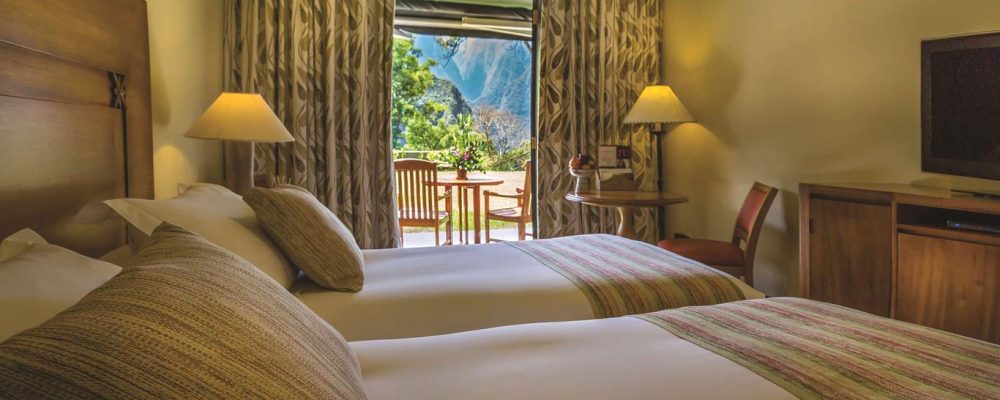
Machu Picchu, located in the Andes Mountains of Peru, is one of the most iconic and popular tourist destinations in the world. As a result, there are several hotels in and around Machu Picchu that cater to the diverse needs of travelers seeking to explore this ancient Incan citadel. These hotels offer a range of accommodations, from luxury resorts to budget-friendly options, ensuring that visitors with varying preferences and budgets can find suitable places to stay.
Belmond Sanctuary Lodge: For those seeking a luxurious experience, the Belmond Sanctuary Lodge is the only hotel located at the entrance of Machu Picchu. This high-end accommodation offers stunning views of the archaeological site and provides guests with easy access to explore the citadel. The hotel also features upscale amenities and services, making it an ideal choice for travelers looking for a premium experience.
Inkaterra Machu Picchu Pueblo Hotel: Nestled in the lush cloud forest near Aguas Calientes, Inkaterra Machu Picchu Pueblo Hotel combines luxury with environmental sustainability. The hotel’s unique design seamlessly blends with the natural surroundings, providing guests with a tranquil and immersive experience. With beautiful gardens, spa services, and exquisite dining options, this hotel offers a perfect balance of comfort and nature.
Sumaq Machu Picchu Hotel: Located in Aguas Calientes, the Sumaq Machu Picchu Hotel is known for its elegant design and warm hospitality. The hotel boasts spacious rooms with breathtaking views of the surrounding mountains and the Vilcanota River. Sumaq also offers Peruvian culinary experiences and cultural activities, allowing guests to immerse themselves in the local traditions.
Tierra Viva Machu Picchu: This hotel chain provides a more budget-friendly option without compromising on quality. Tierra Viva Machu Picchu is conveniently located in Aguas Calientes and offers comfortable accommodations with modern amenities. It’s an excellent choice for travelers looking for a reliable and affordable base for their Machu Picchu adventure.
Inti Inn Machu Picchu Hotel: Situated in Aguas Calientes, Inti Inn Machu Picchu Hotel offers a cozy and intimate atmosphere for its guests. With comfortable rooms and a focus on personalized service, this hotel is a popular choice for budget-conscious travelers who still want a comfortable and welcoming place to stay.
When planning a trip to Machu Picchu, it’s essential to consider factors such as budget, preferred level of comfort, and proximity to the archaeological site. Whether you opt for a luxurious experience or a more budget-friendly option, the variety of hotels in Machu Picchu ensures that visitors can find accommodations that suit their preferences and enhance their overall experience of this remarkable destination.
Restaurants
Machu Picchu, the iconic Incan archaeological site nestled high in the Andes mountains of Peru, is primarily known for its breathtaking scenery and historical significance. While Machu Picchu itself doesn’t have a wide range of dining options, the nearby town of Aguas Calientes serves as the gateway to the site and offers various restaurants to cater to the needs of the many visitors.
In Aguas Calientes, you’ll find a mix of restaurants ranging from casual eateries to more upscale dining establishments. Here are some types of restaurants you might encounter:
Local Cuisine:
Traditional Peruvian: Many restaurants in Aguas Calientes offer authentic Peruvian cuisine, allowing visitors to experience local flavors. You can savor dishes such as ceviche, lomo saltado, and a variety of Andean specialties
International Fare:
International Cuisine: Due to the diverse group of tourists visiting Machu Picchu, there are restaurants offering international dishes to cater to different tastes. You might find options like pizza, pasta, and other familiar dishes.
Cafés and Bakeries:
Coffee Shops: Aguas Calientes has charming cafés where you can enjoy a cup of Peruvian coffee or tea, along with pastries or light snacks. These establishments often provide a cozy atmosphere for relaxation.
Market Stalls:
Street Food: In and around the town, you may come across street vendors selling local snacks and quick bites. This is an excellent opportunity to try some authentic street food and experience the local culinary scene.
Scenic Dining:
Riverside Restaurants: Aguas Calientes is situated along the Vilcanota River, and some restaurants offer riverside seating, providing a picturesque backdrop for your dining experience. This can be a great way to unwind after exploring Machu Picchu.
Vegetarian and Vegan Options:
Specialty Restaurants: Recognizing the diverse dietary preferences of visitors, some restaurants in Aguas Calientes specifically cater to vegetarians and vegans, offering a variety of plant-based dishes.
Keep in mind that the availability of restaurants and the dining scene in Aguas Calientes may evolve over time, so it’s always a good idea to check for the latest recommendations or reviews from fellow travelers. Additionally, making reservations during peak tourist seasons is advisable, as the town can get quite busy with visitors heading to and from Machu Picchu
Tour Packages
Travel Tips
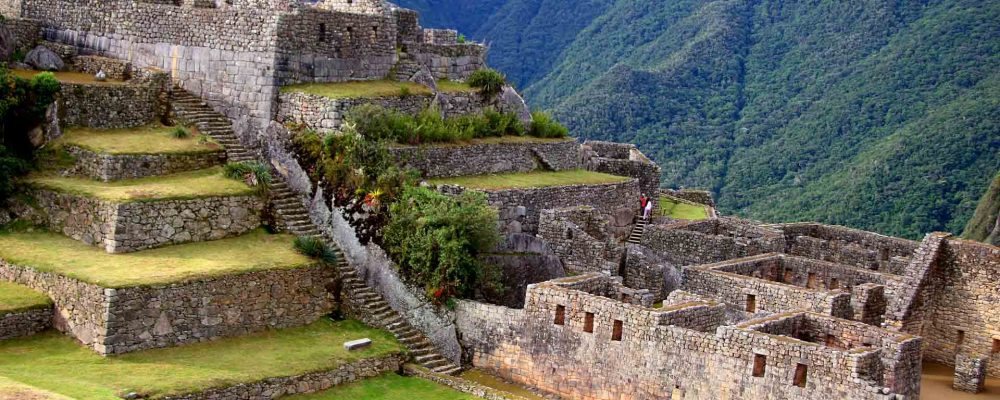
Visiting Machu Picchu is a dream for many travelers, and proper preparation can enhance your experience at this iconic archaeological site. Here are some travel tips to help you make the most of your trip to Machu Picchu:
Acclimate to Altitude:
Machu Picchu is situated at a high altitude, so it’s essential to acclimate before your visit. Spend a couple of days in Cusco, the Sacred Valley, or another high-altitude location to minimize the risk of altitude sickness.
Book in Advance:
Machu Picchu has a daily visitor limit, and tickets often sell out quickly, especially during peak seasons. Reserve your entrance tickets and any additional permits, such as the Huayna Picchu climb, well in advance to secure your spot.
Choose the Right Time to Visit:
Machu Picchu is popular year-round, but there are peak and low seasons. Consider visiting during the shoulder seasons (April to June and September to November) to avoid the largest crowds and enjoy more pleasant weather.
Pack Accordingly:
Be prepared for a variety of weather conditions. Wear layers, bring a rain jacket, and wear sturdy, comfortable shoes for walking. Sunscreen, a hat, and insect repellent are also recommended.
Start Early:
Arrive early to make the most of your visit and enjoy the site with fewer crowds. The first buses from Aguas Calientes (the town at the base of Machu Picchu) start running at 5:30 am.
Hydrate and Snack:
Bring a refillable water bottle to stay hydrated, especially considering the high altitude. Snack on energy-boosting foods to keep your energy levels up during the exploration.
Respect the Rules:
Follow the rules and guidelines set by the authorities to preserve the site. Avoid touching the structures, stay on designated paths, and respect the tranquility of the environment.
Stay in Aguas Calientes:
Consider staying in Aguas Calientes the night before your visit to Machu Picchu. This allows you to start your journey early, well-rested, and avoid rushing to catch the first bus from Cusco or the Sacred Valley.
Train Options:
Explore the various train options to Aguas Calientes. The Vistadome and Hiram Bingham trains offer scenic routes, providing an immersive experience on your way to Machu Picchu.
By keeping these tips in mind, you can enhance your experience and make the most of your visit to the awe-inspiring Machu Picchu
Travel Tips
It seems like there might be a typo in your question. Did you mean FAQ (Frequently Asked Questions) about visiting Machu Picchu? If so, here’s a set of common questions and answers that travelers often have when planning a trip to Machu Picchu:
Machu Picchu is an ancient Incan citadel located in the Andes Mountains of Peru. It is one of the most famous archaeological sites in the world and a UNESCO World Heritage Site.
The most common way to reach Machu Picchu is to fly into Cusco, Peru, and then take a train to Aguas Calientes, the town at the base of Machu Picchu. From Aguas Calientes, you can either hike up to Machu Picchu or take a bus.
Yes, the Peruvian government limits the number of visitors to Machu Picchu each day to help preserve the site. It’s recommended to purchase tickets in advance, especially during peak seasons.
The dry season (May to October) is generally considered the best time to visit, as there is less rainfall and clearer views. However, Machu Picchu can be visited year-round.
Wear comfortable clothing and sturdy walking shoes, as you may be exploring uneven terrain. It’s also advisable to bring a hat, sunscreen, a water bottle, and a light jacket.
Machu Picchu is at a high altitude, so it’s essential to acclimatize in Cusco or other high-altitude locations before visiting. Take it easy and drink plenty of water to avoid altitude sickness.
Yes, but these hikes require separate tickets and have limited availability. It’s recommended to book these tickets in advance if you wish to climb either of these mountains for panoramic views of Machu Picchu.
There is a cafeteria near the entrance where you can purchase food and drinks. However, many visitors choose to bring their own snacks and meals.
Yes, photography is allowed, but the use of tripods is restricted. Drones are not permitted.
Remember to check for any updated information, as regulations and guidelines may change. Additionally, consider the latest travel advisories and entry requirements for Peru.




